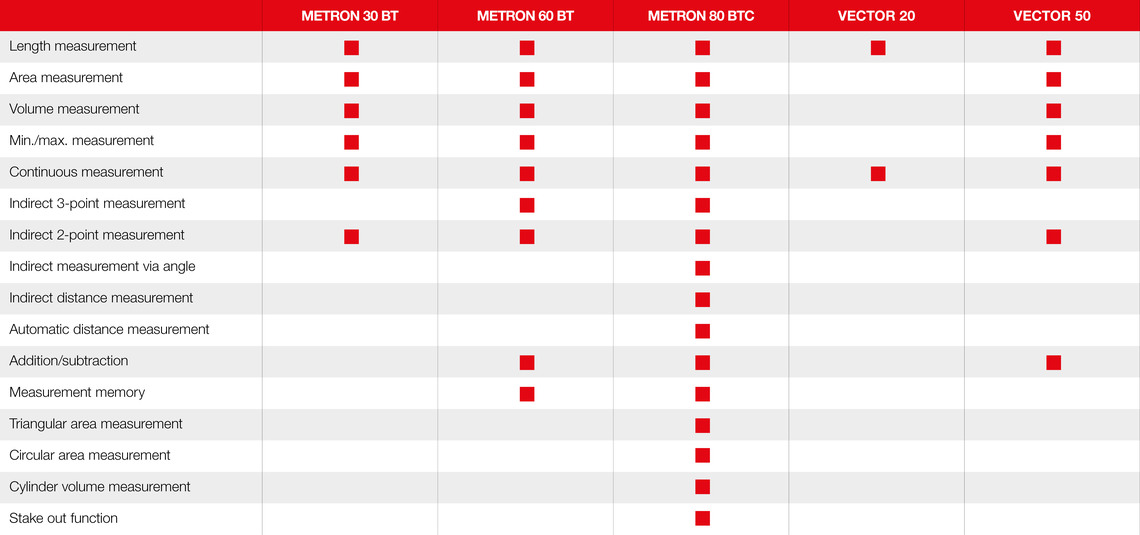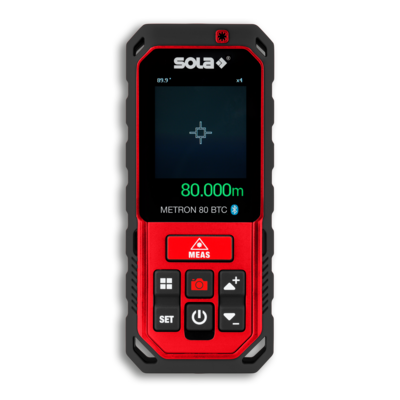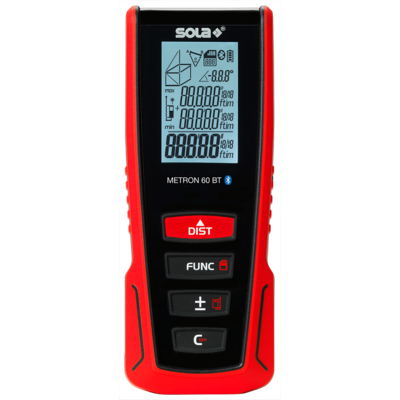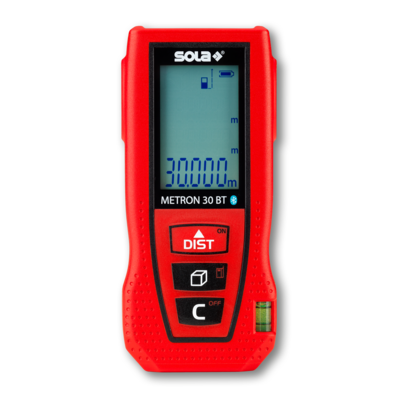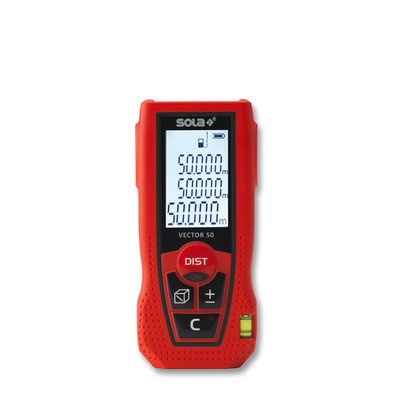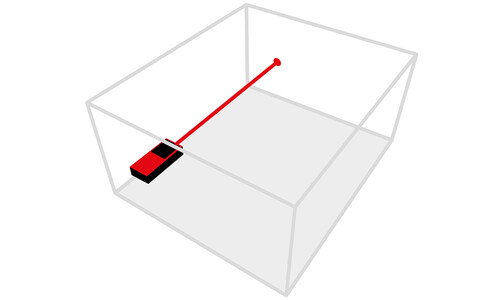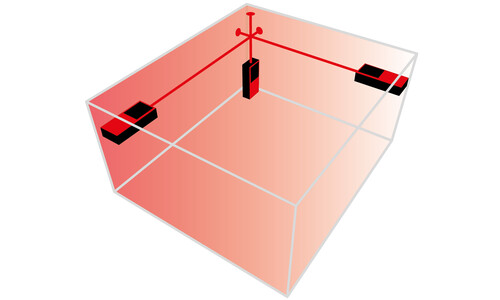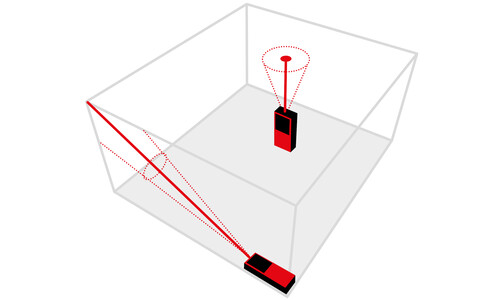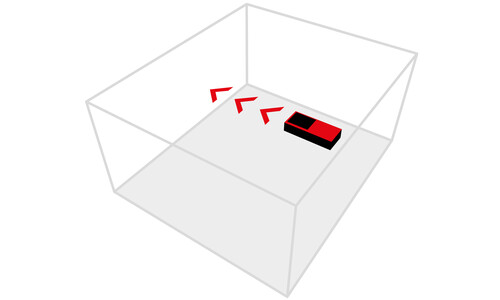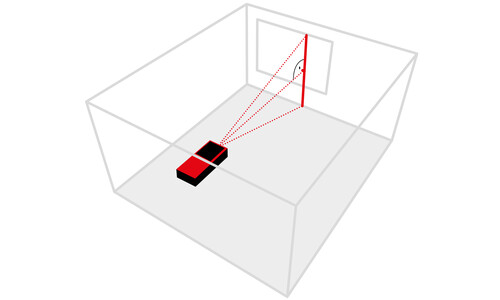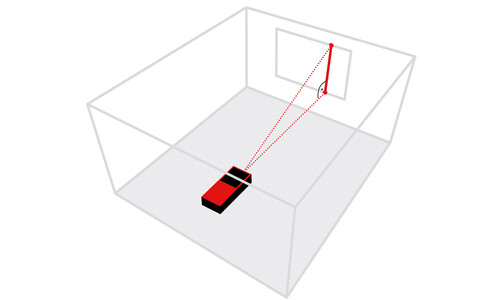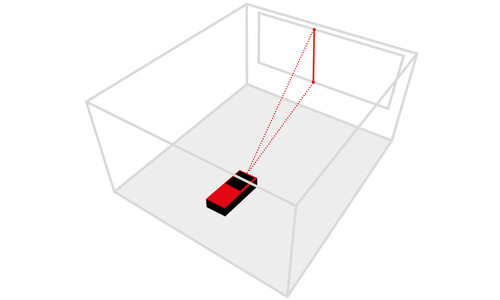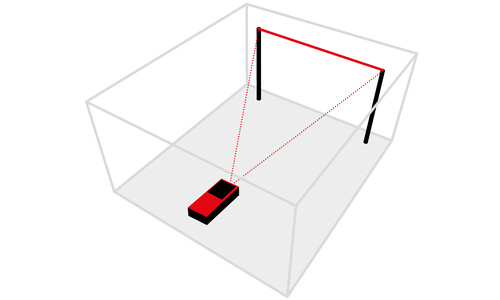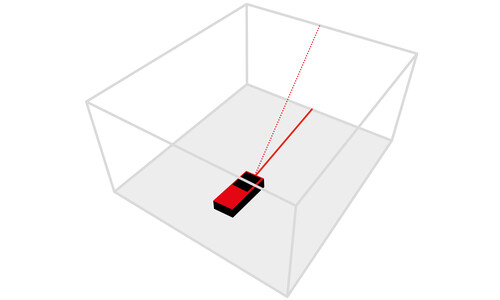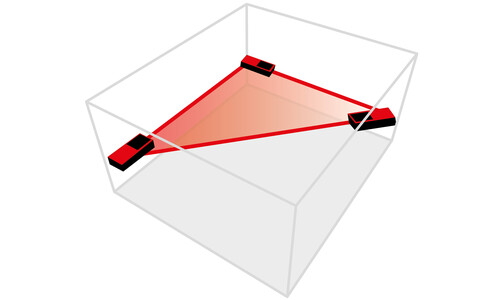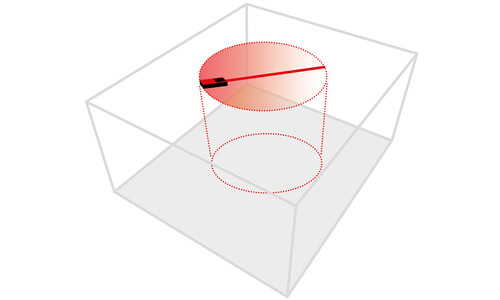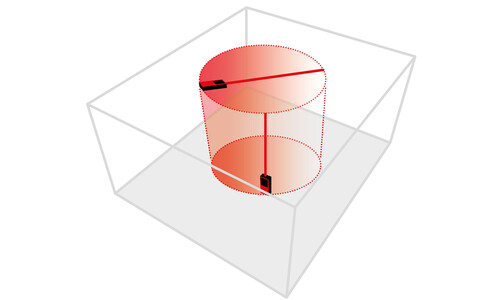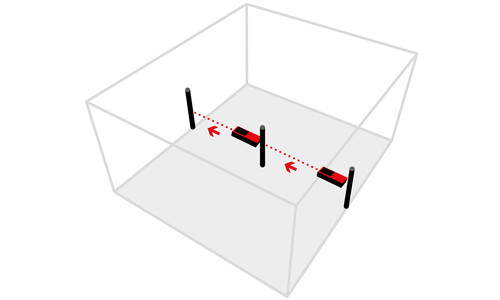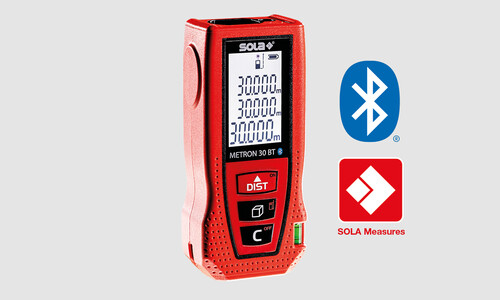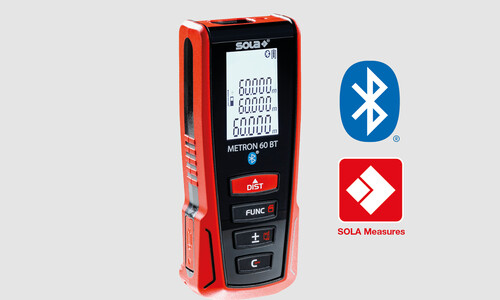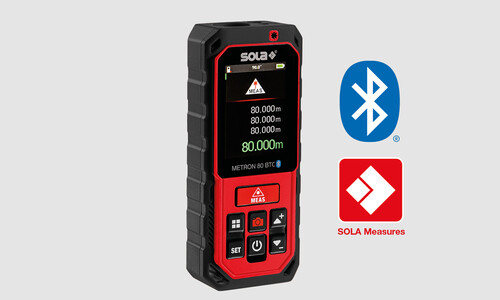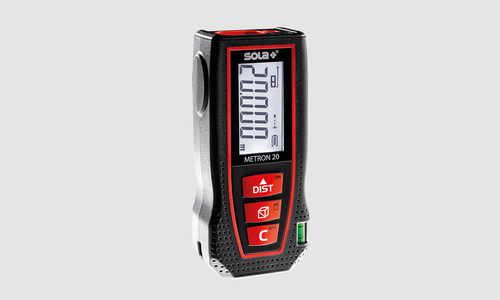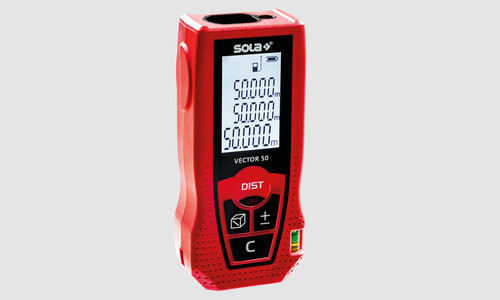Laser Distance Measurers
WHAT IS A LASER DISTANCE MEASURER?
Laser distance measurer or laser distance meter measures distances between two points with speed and precision. The start point of the measurement is the set measurement edge of the laser distance meter and the second point is the end point of the beam. The maximum range varies depending on the device and can extend to over 100 m. Digital distance measurement offers many advantages over conventional measuring using a folding rule or measuring tape. Distances can be measured precisely and conveniently in just a few seconds. In addition, depending on the model, the devices can calculate areas and volumes of spaces at the touch of a button, function using a touchscreen and have integrated Bluetooth and camera functionalities and an integrated tilt sensor.
HOW DOES A LASER DISTANCE MEASURER WORK?
The laser focuses on a target for measurement. The distance measurer then emits a laser pulse, which begins the measuring process. The pulse is reflected from the target and received by the photocell in the device. This enables the exact distance to be calculated using the time span between the emission and reflection of the laser. In practice, SOLA uses a process in which the phase change between external pulsing and internal reference pulsing is determined. Only a small surface area is necessary for location when using laser measurement. For ultrasound, it must be much larger in order to enable it to reflect relevant sound waves. Laser distance meters are easier to use and more accurate than ultrasound distance meters, and far more convenient than measuring using a folding rule and measuring tape.
WHAT MEASURING FUNCTIONS DO LASER DISTANCE MEASURER HAVE?
Laser distance measurer functions vary depending on the manufacturer and device. Conventional devices simply measure distances and show these on the display. But if the user also wants to calculate areas and volumes and determine inaccessible distances or heights via angle measurements, then they should think about purchasing a more complex device. Laser distance meters that have these functionalities are equipped with an integrated tilt sensor. In these times of greater interconnectivity, many laser distance measurers also now come equipped with a Bluetooth interface. Together with the app, lengths can be sketched and dimensioned directly on the smartphone, for example, or measurement results can be saved, managed and shared.
WHERE CAN LASER DISTANCE MEASURERS BE USED?
There are a whole range of possible uses for laser distance meters. They are primarily used in the construction industry be it in construction works, renovations, interior design or in exterior works, laser distance meters are needed everywhere. In a matter of seconds, you can calculate distances, areas and volumes of indoor spaces or check measurements and distances. A wide range of occupations use distance meters, ranging from drywall builders, painters, tilers and floorers, joiners and kitchen fitters to carpenters, bricklayers or even architects and interior decorators.
WHAT ARE THE ADVANTAGES OF A LASER DISTANCE MEASURER?
Laser distance measurers simplify the measuring process, save time and are convenient to use when working. A push of a button is all it takes to set up various measuring functions. Distances can be measured or checked, and areas or volumes calculated in a matter of seconds, all with exceptionally high accuracy, which is far superior to measuring tapes or folding rules. A further advantage of laser distance measurers is that precise measurements can be made alone, without requiring the help of another person. Laser distance meters also make it easier to take measurements in difficult situations, i.e., ‘overhead’ measurements.
HOW ACCURATE ARE LASER DISTANCE MEASUREMENTS?
The measuring accuracy of laser distance meters varies depending on the device and manufacturer and can usually be found in the technical information or in the operating instructions. Often, laser distance measurers have a measuring accuracy with a tolerance of +/- 2 mm. This measuring tolerance usually refers to a given distance and increases with greater distances. The majority of SOLA laser distance meters have a maximum measuring tolerance of +/- 1.5 mm for distances up to 10 m. The specified measuring accuracy relates to normal measuring conditions. Measurements may become less accurate in adverse conditions, such as direct sunlight, a poorly reflective surface, or measurement on glass or glossy surfaces, leading to measurement errors.
WHAT RANGE DO LASER DISTANCE MEASURERS HAVE?
As with the measuring accuracy, the maximum range of laser distance measurers varies greatly. Laser distance meters used in the construction industry usually cover measurement distances of 20–60 m.
OVERVIEW OF SOLA LASER DISTANCE MEASURERS
